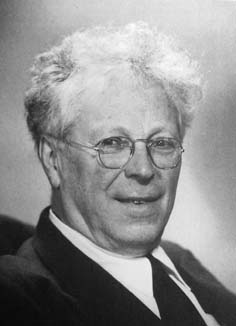Abram Besicovitch facts for kids
Quick facts for kids
Abram Besicovitch
|
|
|---|---|
 |
|
| Born |
Abram Samoilovitch Besicovitch
23 January 1891 Berdyansk, Russian Empire
|
| Died | 2 November 1970 (aged 79) Cambridge, UK
|
| Nationality | Russian Empire and British |
| Alma mater | St Petersburg University |
| Known for | Hausdorff–Besicovitch dimension Kovner–Besicovitch measure Besicovitch covering theorem Besicovitch inequality Besicovitch functions Besicovitch set |
| Awards | Adams Prize (1930) De Morgan Medal (1950) Sylvester Medal (1952) Fellow of the Royal Society |
| Scientific career | |
| Fields | Mathematics |
| Institutions | University of Liverpool University of Cambridge |
| Doctoral advisor | Andrey Markov |
| Doctoral students | Joseph Gillis Patrick Moran Gholamhossein Mosaheb |
| Influenced | Freeman Dyson |
Abram Samoilovitch Besicovitch (sometimes called Besikovitch) was a famous mathematician. He was born in Russia on January 23, 1891, and later worked mostly in England. He made big contributions to many areas of mathematics.
Contents
Life and Career
Early Life and Studies
Abram Besicovitch was born in Berdyansk, a town by the Sea of Azov (which is now in Ukraine). He came from a Karaite Jewish family.
He studied mathematics at St. Petersburg University. His teacher was a well-known mathematician named Andrey Markov. Abram earned his PhD in 1912. After graduating, he started doing research in probability theory. This is the study of how likely events are to happen.
In 1917, he became a professor at the University of Perm. This was a difficult time in Russia because of the Russian Civil War. In 1920, he moved to Petrograd University.
Moving to Europe and England
In 1924, Besicovitch traveled to Copenhagen, Denmark. He had a special scholarship called a Rockefeller Fellowship. There, he worked on something called "almost periodic functions" with another mathematician, Harald Bohr. These are special types of mathematical functions.
After visiting G.H. Hardy at the University of Oxford, Besicovitch moved to England permanently. He got a job at the University of Liverpool in 1926. A year later, in 1927, he moved to the famous University of Cambridge.
Work at Cambridge
At Cambridge, Besicovitch focused on two main areas of mathematics. One was combinatorial methods, which involves counting and arranging things. The other was real analysis, which studies real numbers and functions.
He worked on interesting problems like the Kakeya needle problem. This problem asks how small an area you need to turn a line segment (like a needle) completely around. He also studied the Hausdorff–Besicovitch dimension. This is a way to measure how "rough" or "fractal" a shape is. These two areas became very important in mathematics over time.
In 1950, he became the Rouse Ball Chair of Mathematics. This is a very important and respected position at the University of Cambridge. He retired in 1958 and spent eight years traveling in the United States. Abram Besicovitch passed away in Cambridge in 1970.
Awards and Honours
Recognitions and Medals
Abram Besicovitch received many awards for his important work.
- In 1934, he became a Fellow of the Royal Society (FRS). This is a very high honour for scientists in the UK.
- In 1950, he received the De Morgan Medal from the London Mathematical Society.
- In 1952, he won the Sylvester Medal from the Royal Society.
He was also a visiting scholar at the Institute for Advanced Study in the United States in 1954.
Other Honours
- An asteroid in space, named 16953 Besicovitch, was named after him.
- A painting of Besicovitch by Eve Goldsmith Coxeter is kept at Trinity College, Cambridge.
Quotation
- A mathematician's reputation rests on the number of bad proofs he has given.

